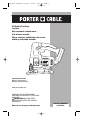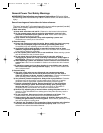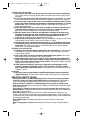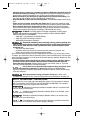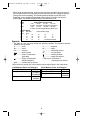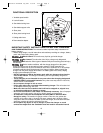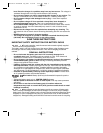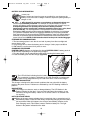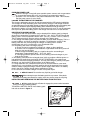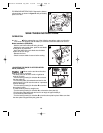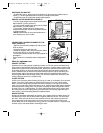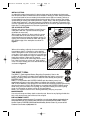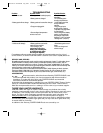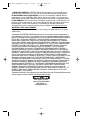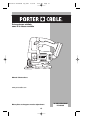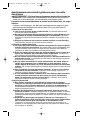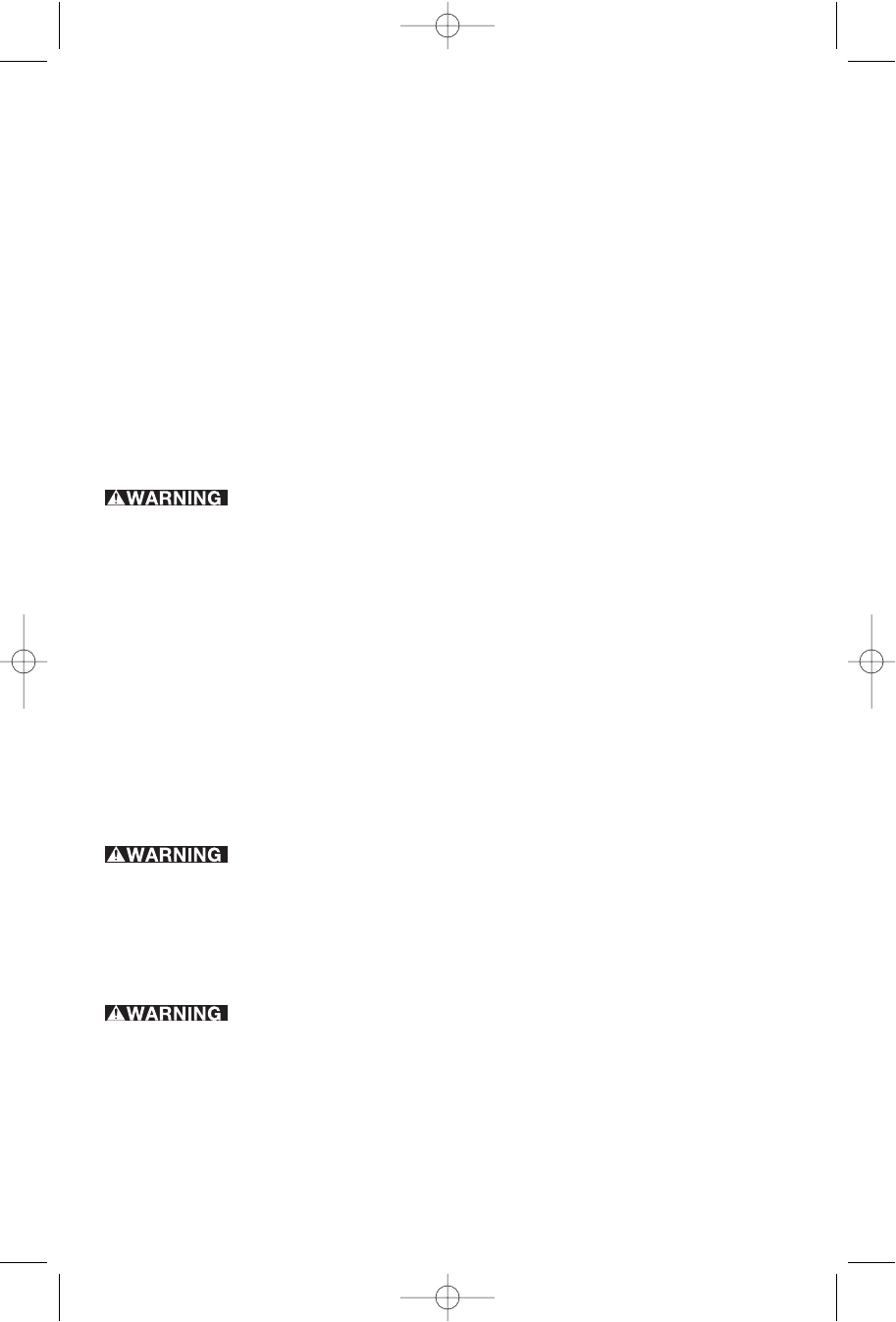
heat. Place the charger in a position away from any heat source. The charger is
ventilated through slots in the top and the bottom of the housing.
• Do not mount charger on wall or permanently affix charger to any surface. The
charger is intended to use on a flat, stable surface (i.e., table top, bench top).
• Do not operate charger with damaged cord or plug — have them replaced
immediately.
• Do not operate charger if it has received a sharp blow, been dropped, or
otherwise damaged in any way. Take it to an authorized service center.
• Do not disassemble charger; take it to an authorized service center when service
or repair is required. Incorrect reassembly may result in a risk of electric shock,
electrocution or fire.
• Disconnect the charger from the outlet before attempting any cleaning. This
will reduce the risk of electric shock. Removing the battery pack will not reduce this
risk.
• NEVER attempt to connect 2 chargers together.
• The charger is designed to operate on standard household electrical power
(120 Volts). Do not attempt to use it on any other voltage.
SAVE THESE INSTRUCTIONS
IMPORTANT SAFETY INSTRUCTION FOR BATTERY PACKS
For safe operation, read this manual and manuals originally supplied
with tool before using the charger.
The battery pack is not fully charged out of the carton. Before using the battery pack
and charger, read the safety instructions below. Then follow charging procedures
outlined.
READ ALL INSTRUCTIONS
• Do not incinerate the battery pack even if it is severely damaged or is
completely worn out. The battery pack can explode in a fire. Toxic fumes and
materials are created when LI-ION battery packs are burned.
• Do not charge or use battery in explosive atmospheres, such as in the presence
of flammable liquids, gases or dust. Inserting or removing the battery from the
charger may ignite the dust or fumes.
• If battery contents come into contact with the skin, immediately wash area with
mild soap and water. If battery liquid gets into the eye, rinse water over the open eye
for 15 minutes or until irritation ceases. If medical attention is needed, the battery
electrolyte for LI-ION batteries is composed of a mixture of liquid organic carbonates
and lithium salts. For NI-Cd batteries it is a 25-35% solution of potassium hydroxide.
• Contents of opened battery cells may cause respiratory irritation. Provide fresh
air. If symptoms persists, seek medical attention.
Burn hazard. Battery liquid may be flammable if exposed to spark or
flame.
• Charge the battery packs only in PORTER-CABLE chargers.
• DO NOT splash or immerse in water or other liquids. This may cause premature
cell failure.
• Do not store or use the tool and battery pack in locations where the
temperature may reach or exceed 105°F (40˚C) (such as outside sheds or metal
buildings in summer).
Never attempt to open the battery pack for any reason. If battery pack
case is cracked or damaged, do not insert into charger. Do not crush, drop or damage
battery pack. Do not use a battery pack or charger that has received a sharp blow, been
dropped, run over or damaged in any way (i.e., pierced with a nail, hit with a hammer,
stepped on). Damaged battery packs should be returned to service center for recycling.
:
:
:
7
90550119 PC1800JS Jig Saw 4/9/09 7:52 AM Page 7



